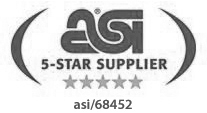Your brand is more than your logo or your website or even your promotional products; it’s the all-encompassing gut feeling that people have about your company or organization. Yes, your logo and your website contribute to that feeling, but so do a million other things: what people say about you, what you say about yourself, your storefront if you have one, even the way you answer the phone and sign your emails. Promotional products, as your brand’s ambassadors, contribute largely to the public’s perception of your company, so when choosing promotional products it’s essential that you know exactly how they will cultivate the brand you want to have. Here are some tips to staying smart and focused when incorporating promotional products into your branding efforts. 1. Develop a strategy. Before you can start branding or rebranding, you have to decide what you want people’s perception to be of your company. After all, you’re going to be attempting to create and refine that perception. When it comes to choosing promotional products, get on the phone with an industry expert and ask her what she recommends: What are your highest selling products? Which products have the best return on investment? What can I get for X amount of money? I want to get noticed at a tradeshow; what products are your best attention grabbers? In order to know what promotional products will best work for your brand, figure out in what areas your brand is lacking. Are people intimidated by your gym? Give away goofy stress balls. Do you work for a financial institution recovering from bankruptcy? Instill trust with promotional products that are valuable but not flashy, like umbrellas to keep customers safe from economic storms.2. Develop alignment. Having an aligned brand means that every aspect of your business tells the same story. For example, southeastern United States grocery chain Publix markets itself as a pleasant place to shop (“Where shopping is a pleasure”) and a sensible choice for discerning families. They make their website informational rather than salesy, so that customers feel their relationship with Publix is a partnership rather than a transaction. Their stores are clean and well lit. Their in-house packaging is simple and uncluttered. At every point that a customer interacts with Publix they get the same gut feeling: This store is a pleasant, relaxing place to get what I need for my household. Even the store’s promotional products — reusable black and green grocery totes — say economic and environmental sensibility. And the promotional products are stamped with the white, sans serif “Publix.” Clean and simple, just like every other component of the Publix brand.3. Be consistent. Alignment goes hand in hand with consistency. Whereas alignment means your brand must always tell the same story, consistency means you must tell it often. According to alignment, your promotional products must communicate the same thing as your stores, logo, website, and customer service. According to consistency, you should repeatedly use the same promotional products to communicate that message. People in the southeast recognize Publix’s promotional products wherever they go, not because they’ve seen them once, but because they’ve seen them many times: both in the stores and out. And since Publix only offers the totes in two or three neutral colors, it’s easy to recognize the promotional products. In fact, color is key to consistency. Imagine that Coca-Cola’s cans came in red, orange, green, blue, brown and purple. Their brand would be confusing to consumers, who might no longer read the can as “refreshing.” Additionally, it would be more difficult to recognize Coca-Cola brand promotional products without their signature color. Think of UPS, Home Depot and JetBlue. Or Nickelodeon, Facebook and Twitter. Many of the best brands use one consistent color, right down to their promotional products. Imagine that your store gave away purple plastic cups for a month. Within a week everyone in town would be asking where all the purple cups were coming from. Color is highly influential with memory, and memory is enormously important for brand awareness. Additionally, consider limiting your promotional products to a few main items. Use promotional products with a high-perceived value so that customers will hold onto them, but make sure you’re also getting a good return on your investment.
Search
Recent Posts
- Getting Started 1,2, 3D Media April 1, 2019
- JWT 100 Things to Watch in 2014 January 10, 2014
- 3 Dimensional Table Tents for Interactive Bar Promotions January 31, 2013
- How to Use Infographics successfully in your dimensional advertising and direct marketing collateral material July 18, 2012
- 3D Dimensional Mail for Direct Marketing Success October 12, 2011
Categories
- Advertising Ideas
- Advertising Specialties
- Artwork
- Association Marketing
- Automotive
- Beer Wine Liquor
- Beverage
- Business Trade Show Gifts
- Case Histories
- Charitable Donation Marketing
- Direct Marketing
- Educational Marketing
- Gallery
- General
- How To (Layout/Design)
- Imprinted Promotional Products
- Magic Cubes
- Marketing Concepts
- Medical Pharma Marketing
- News
- Production Specifications
- Promotional Products
- QR Codes
- Resellers
- Reviews
- Trade Show Gifts
- Travel Promotional Products
- Uncategorized










